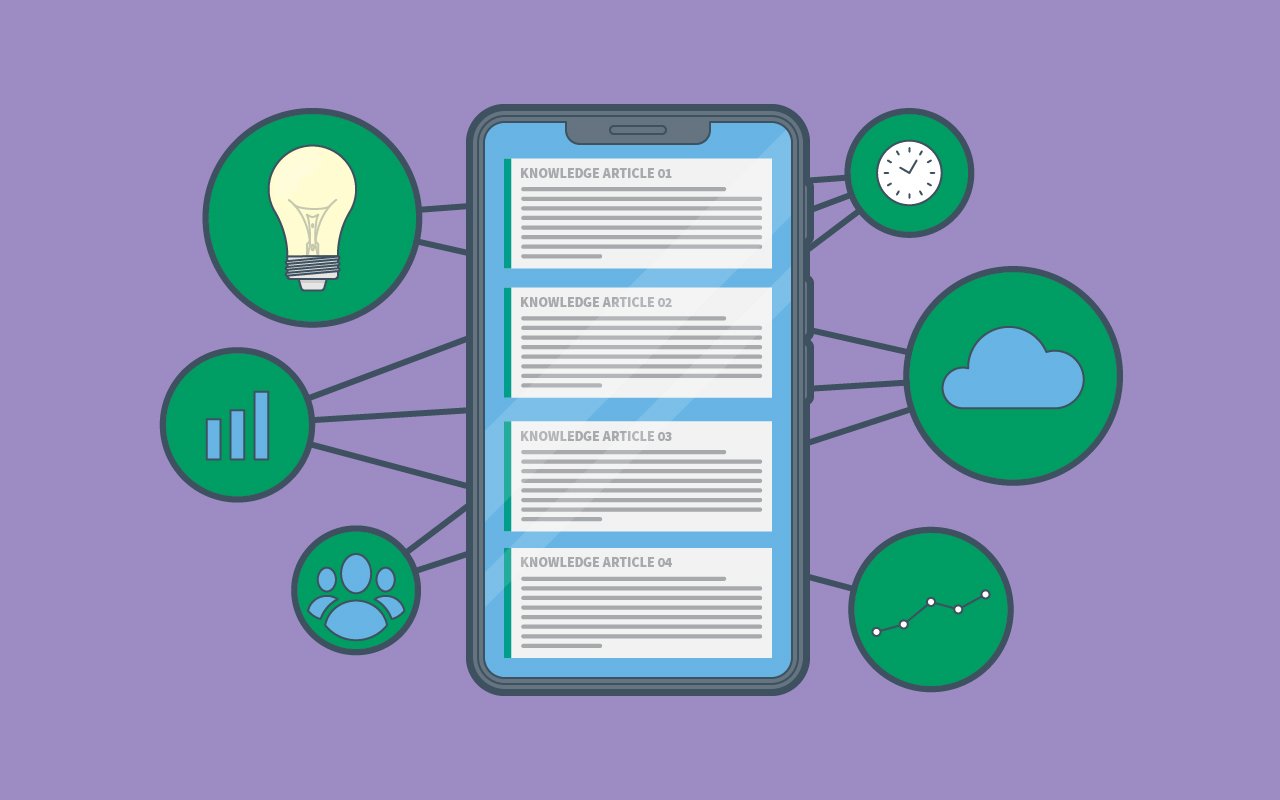EV Blog
Bob Rizzo | September 08, 2020
7 Benefits and Examples of Enterprise Service Management
Enterprise Service Management is sometimes called a “decade-old fresh trend” for good reason. IT Service Management (ITSM) software has long been a staple of the service desk, and indeed it has revolutionized the way IT departments function. With the success of ITSM, some organizations have discovered the benefits of using ITSM software for Enterprise Service Management (ESM) and have jumped on the trend. Hence, the ironic term “decade-old fresh trend”.
Enterprise Service Management is part of the overall push for digital transformation, and while some organizations opted to try the practice in the past with older software, they may have chosen to abandon their ESM strategy due to a lack of support. With the advances in technology, ESM is now easier than it was before, refreshing the interest of those who abandoned the practice in prior years.
The benefits of Enterprise Service Management can elevate your company’s goals and fast track digital transformation – even in a post-COVID world. To understand these benefits, it is important to first understand Enterprise Service Management as a whole.
What is an Enterprise Service Management
ITSM helps to shape an organization’s digital trajectory by helping IT and the rest of the enterprise stay aligned with business goals. ITSM software streamlines communication between IT and the rest of the organization using a standard set of best practices. Using this same idea, Enterprise Service Management evolved from ITSM and works to help different departments across the enterprise communicate and operate with shared goals and a standard set of procedures. The goal of ESM is to give an enterprise the ability to deliver and support services for employees.
There are a few key differences between ITSM and ESM. ITSM is specific to the IT department including the service or help desk and there are specific procedures relating to IT processes. Enterprise Service Management is used across many departments. For example, ESM can be used for Human Resources (HR) requests, building Facilities requests, and employee onboarding.
Both ITSM and ESM use knowledge management and may also use some ITIL processes (where it makes sense, of course) to bring greater value. This means that through existing knowledge and existing procedures, a self-service portal can be deployed to help streamline all processes. Although ESM and ITSM have their differences, they can be managed using the same software in many cases, essentially maximizing your ROI on ITSM software.
7 Benefits of Enterprise Service Management
Service management software enables seamless communications between the customer (usually an employee of a company) and the service desk (usually the IT department, but in this case any other internal team) by creating trackable tickets and using an established set of best practices.
Of course, these are not the only benefits of using an ITSM and ESM solution. Below are seven benefits and examples of ESM in action.
1. Improved efficiency and reduced operational costs
Before the Coronavirus pandemic, IT budgets were growing year-over-year. This boom in IT spending seemed to be a great indicator that economies were stable and climbing, but in the wake of COVID-19 many enterprises are looking at a completely different landscape. IT spending is now predicted to drop by 8%, according to Gartner. This indicates a greater shift to lowering costs in general, while possibly also contending with fewer employees who must handle the same workload.
With the uniform procedures of Enterprise Service Management, companies can see a decrease in costs by as much as 50% and in increase in productivity by 30%. The streamlined efficiency will also lower operational costs overall as problems will be resolved more quickly with less downtime.
Another way ESM may reduce costs is by tracking company assets and equipment. This is vital in a rapidly changing remote work environment. Equipment and other assets and other assets that may have been sent home with an employee can become difficult to track without asset management software associated with an ESM solution.
A great example of this benefit can be found by reviewing a case study of the MENTOR Network. Through streamlining asset management, new hire onboarding, and IT service requests using an ITSM self-service portal, they have seen a decrease of 25% in the amount of service calls and tickets being processed daily.
2. Maximize Your ROI on a Corporate ITSM Solution
Using an ITSM solution with a low total cost of ownership, or TCO, for ESM can have a major return on investment. This is important because it means that the more people who use a corporate ITSM solution, the better the ROI when compared to using the software for IT alone.
To calculate the ROI of your service management solution there are several factors to take under consideration. These factors include the number of tickets handled each month, the percentage of tickets reduced, the average cost of each ticket, and monthly licensing costs. To request an in-depth calculation of your potential ROI using a service management solution, click here.
3. Enterprise Service Management Maximizes Self-Service Efficiencies
When used with self-service technology, ESM maximizes self-service efficiencies. The different types of self-service capabilities, including the ability to search for and submit HR requests, facilities requests, marketing requests, or any other need, work together to increase the use of the ESM tool and boost productivity.
Just as ESM maximizes the ROI on a corporate ITSM tool, self-service boosts the ROI of an ITSM or ESM tool. To fully calculate the ROI of self-service technology with service management, request an in-depth calculation here.
4. Improve Communication and Collaboration Across Your Company
Enterprise Service Management provides a uniform way to create requests and complete onboarding, ultimately leading to improved communication and collaboration. However, beyond just providing uniform procedures, ESM makes it easier to collaborate even when working remotely.
Consider if you are working on a project with a remote team member, and you need a uniform place to track notes or progress on resolving the issue. If you are working in the corporate office and notice that a facilities request has been open for a longer time than usual. You will be able to check the notes on the ticket and contact the parties involved through the same ticket, ultimately leading to faster resolution. If a ticket needs to be elevated, it can easily be done without multiple calls or emails.
Not only does this empower employees to work remotely and manage their tasks better, it also improves employee retention. Providing an omnichannel (or one-stop-shop) experience to your employees can be the difference between frustration and satisfaction – but combining these channels also means the knowledge can spread more easily.
5. Improve Visibility and Governance Within Your Organization
Just as employees can benefit from seeing each other’s progress, managers can more easily track project and ticket status with an ESM solution. This improves visibility giving managers the insights they need to properly govern without micromanaging or wasting time. It also provides insight into areas where employees may need additional help.
Furthermore, self-service software requires fewer resources to manage and more simplicity when managing a remote team, freeing up leadership teams for more strategic issues. Rather than having to push for new training when a procedure changes, managers can simply update the knowledge management database and self-service portal.
Executive teams can also benefit from software because of the ability to compile and review reports which will indicate where resources are being used, productivity levels, and team strengths or weaknesses. Those who must track internal processes to ensure internal standards are met will also benefit from the improved visibility afforded by Enterprise Service Management software.
6. Dramatically Improve Standardization Within Your Organization
Consistent rules and standard procedures across the organization can lead to an overall better experience for employees and teams as a whole. Using a self-service portal combined with a knowledge management database and Enterprise Service Management solution, employees will spend less time searching for potentially outdated procedures.
For example, onboarding and finding answers can become simpler with the standardization of ESM. If a new hire must search for answers in a shared drive or trying to communicate with different departments who prefer different methods of communication, it can be time consuming. With ESM, a new hire can access the portal and walk through their options, ultimately contacting coworkers in a uniform way through the ESM. In the end, this can result in hours saved in the onboarding experience and resolution of a customer’s issue.
7. Deliver a Better Customer Experience
When employees are spending less time searching for answers and jumping through hoops within the organization, it results in a better experience for customers outside of the organization.
Think of facilities requests for a moment. Imagine that a light fixture has become damaged and needs to be repaired or replaced in a convenience store. With ESM, the store employees are able to submit a facilities request quickly, which is then passed to a vendor for repair, all while progress is trackable and traceable for all parties involved. As a result, the light will be fixed in fewer steps and customer and employee safety will remain a priority. However, if the process is cumbersome to submit or escalate a ticket, the light stays out longer. Employees and customers may be unable to see other issues because of the poor lighting, or it may open the door for an unsafe situation where cameras can no longer see the area. Those extra days or weeks can cost more than if the repair had been done quickly because employee and customer safety may be compromised.
When employees can make internal requests between business units more quickly, it boils down to a better experience for customers.
Future Outlook of ESM
Although ESM is being adopted at higher rates each day, companies are still learning the benefits and adopting ESM solutions. Post COVID-19, enterprises will be looking to increase their ROI on traditional ITSM solutions and will find that Enterprise Service Management helps propel ROI and other goals to the future.
With the incorporation of knowledge management, AI technology, chatbots, self-service, and predictive analysis, the future of ESM looks bright.
To learn more about how IT service management can lower costs and increase efficiency for your enterprise, click here to get a demo.
Subscribe to Email Updates
Bob Rizzo
Bob Rizzo is the Product Marketing Director at EasyVista. An accomplished sales and marketing professional focused on helping customers, he serves as the product evangelist, both internally and externally, for the Easy Vista Self Help product. Rizzo has vast experience working with customers and partners in the IT service management software industry and understanding the challenges they face. Outside of work, he is an avid sports fan and enjoys playing golf, billiards and soccer.






